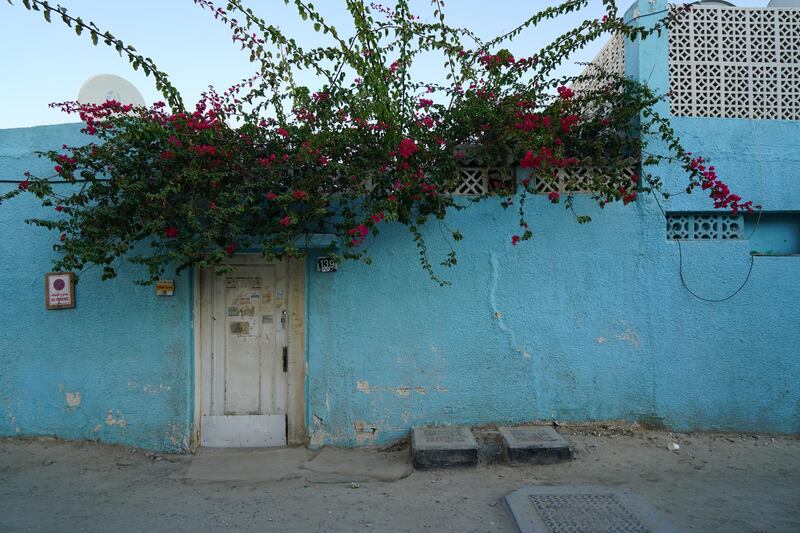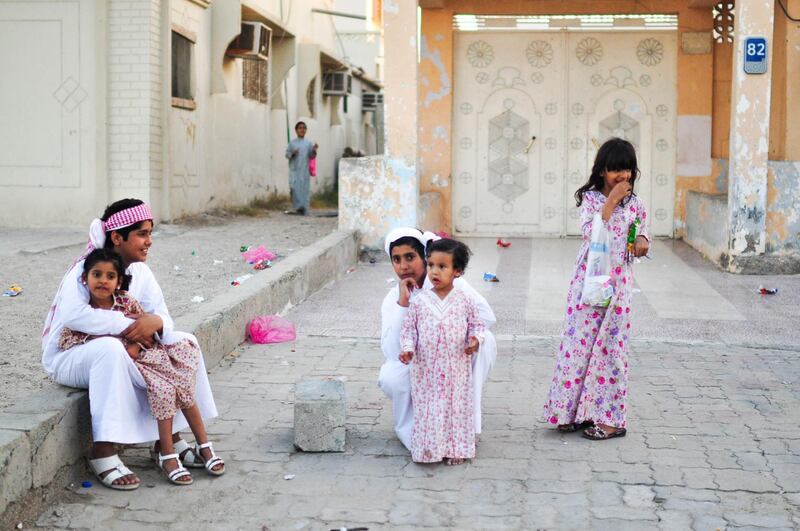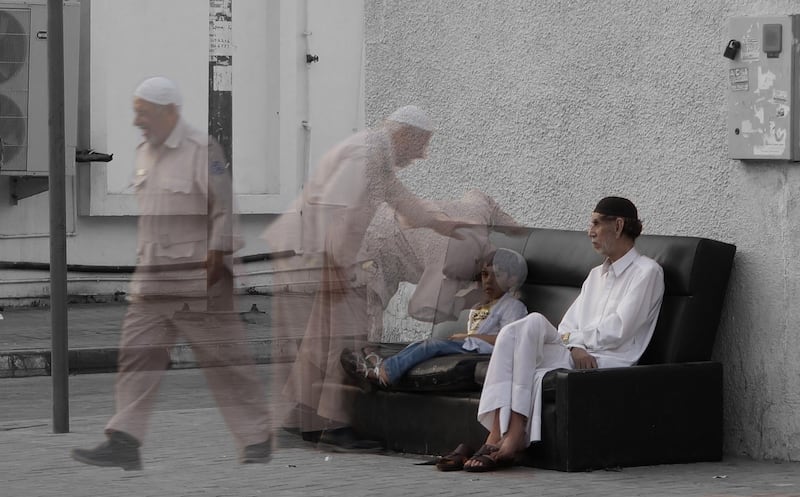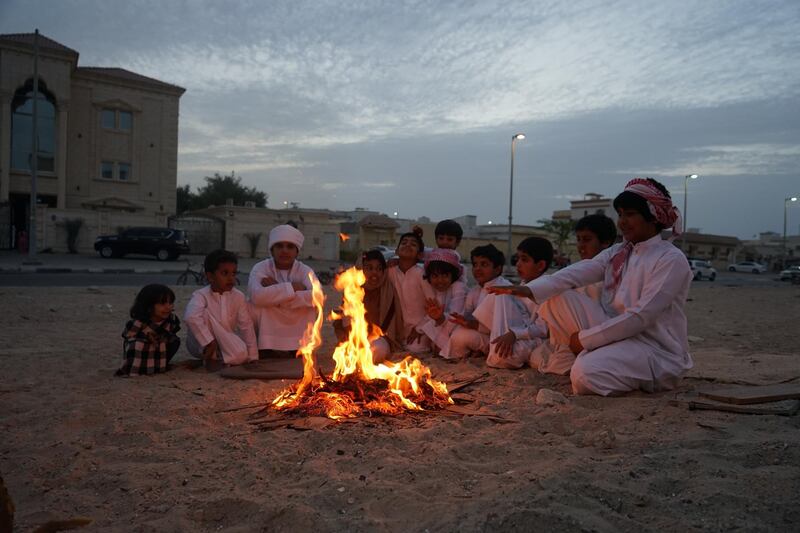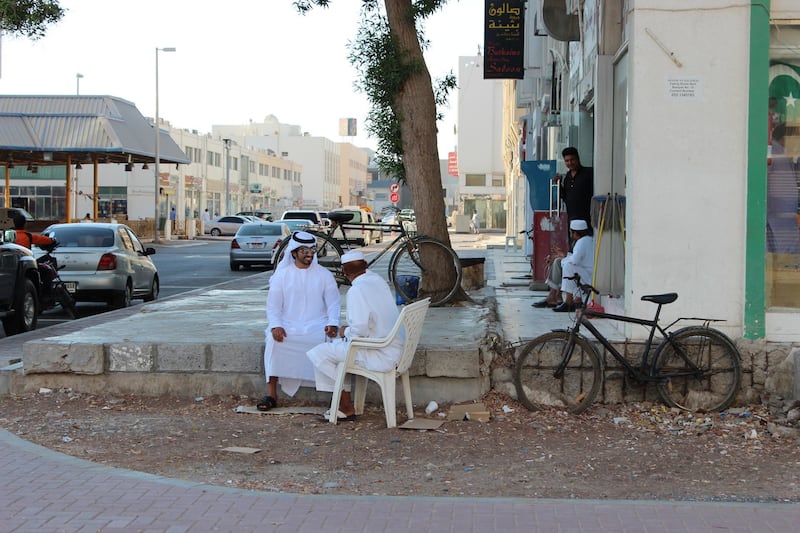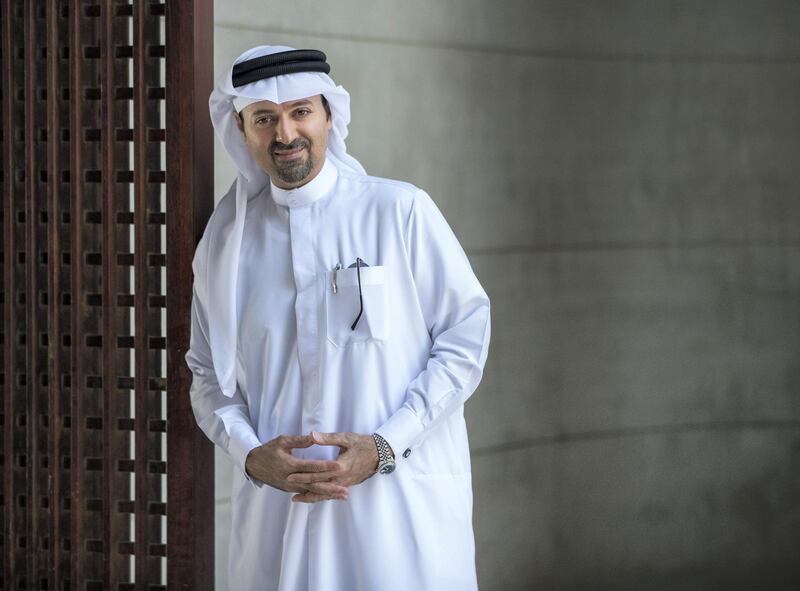In a building off one of Masdar City’s shaded, windy plazas is the Sustainable Critical Infrastructure Programme at the Masdar Institute. One of the few urban design studies programmes in the region, it was set up four years ago by Dubai-born architect and urban designer Khaled Alawadi. There, students research not just the built environment, but how the urban landscape interacts with social rituals, economic diversity, and people’s daily routines: all the unplanned, unexpected, minute and important events that make up life in the city.
Somewhat marooned in the middle of the design lab's still-shiny halls is a sequence of enclosed cubicles of frosted glass that the students label "fish tanks". Alawadi, a conscientious, meticulous man, occupies one at the end of a hallway: inside is a tiny little room, complete with table, chairs, two computers, and a bookshelf at eye height on which urban design books are stacked flat in evenly spaced piles. The urban designer is the curator for the UAE's National Pavilion at this year's Architectural Exhibition of the Venice Biennale; the international exhibition takes place in Venice from May to November, and in which the UAE is participating for the third time. Alawadi's subject, Lifescapes Beyond Bigness, is one he's been researching and publishing on for a long time. He brings a holistic perspective to the UAE's development, looking not only at how its architecture progressed, but also how that connects to the development of roads, facilities, and, more basically, people.
"We are talking about the social aspects of the cities as well as the physical aspect," says Alawadi. "Our work pays attention to people's daily experiences and daily activities at the human scale."
Alawadi divides the development of the UAE into three stages: inception, dispersion and bigness.
Inception was the first stage, when small city blocks were built, with a variety of shops and kinds of houses close to each other, where children played among the alleyways, plastic chairs were dragged out into the sand for impromptu catch-ups, and people walked to the shops for their daily needs.
Dispersion, which began in the 1980s, was the spread of suburbs beyond the city centre. “Dispersion was the rise of the automobiles, and the demise of the human scale,” says Alawadi. “Small city blocks were replaced by larger blocks; the mixed system was swapped with single use. The streets that were packed by people were packed by automobiles.”
"After dispersion: bigness," he says. "After [the year] 2000, planners started to embrace neoliberalisation and the city enhanced the role of the private sector in city design and development. You had scaled-up architecture – spectacular architecture, star architecture. This urban model dominated our city, privatised the public realm and large sections of our life. The social content is lost. Those neighbourhoods lost density and diversity."
But, he says, pockets of human-scale architecture remain, in neighbourhoods such as Al Khalidiyah and Baniyas in Abu Dhabi, and Al Satwa and Al Shorta in Dubai. (Alawadi's research for the National Pavilion focuses on Abu Dhabi, Dubai and Al Ain, but, at a recent talk held at New York University Abu Dhabi, he expressed his desire to next research the Northern Emirates.) There, you see the kind of mixed-use, high-density involvement that brings people to the streets and encourages a mix of social classes and nationalities.
Alawadi is using the platform of the National Pavilion to recognise and celebrate these areas – perhaps saving them from demolition, and more generally guiding urban design in the region to take stock of the larger system in which new buildings sit. "I'm not saying, let's reject bigness, let's reject dispersion and suburbanisation," he says. "These are common realities; they are part of the economic strategy, and suburbanisation provides some social benefits too – people like privacy, they like big yards. I'm saying let's improve them. Let's create a new model for the suburb of the future."
Standing on the streets tracking residents' routines, conducting interviews with people of many nationalities and all ages, logging the kinds of neighbourhood shops and restaurants, Alawadi and his researchers created what they call an "inventory" of the UAE's human-scale landscapes. In Venice, they will display maps and photos to demonstrate their findings.
“My hope is that this inventory will renew urban design ideals and practice and theory in the region, and guide them beyond their dead end,” he says.
Such a validation of small, organic spaces over top-down, master-planned ideals draws upon the work of 1960s urban thinkers and the New Urbanism movement, which promoted walkable spaces, centres with a variety of facilities, and architecture that is appropriate to its context. (Alawadi jokes that he includes a true/false question on his exams concerning the exact wording of one of the earliest and most important works in this field, by the New York urbanist Jane Jacobs: is it The Life and Death of Great American Cities or The Death and Life of Great American Cities? His students, he says with an air of bemused resignation, tend to fail.) And, to a certain extent, this lack of human-scale activity is what many migrants to the Gulf remark upon when they arrive: the fact that Dubai and Abu Dhabi are not walkable cities will be news to few. But Alawadi's work is among the first to apply these insights to the Gulf, to underline exactly how Gulf cities' design relates to their social health, and to use the Gulf as test cases for other developing cities – a project he calls an "ethical responsibility".
Born in Dubai in 1979, he began his studies in architecture during the Dubai boom, but quickly realised that architecture alone could not address the scope of the changes to daily life that the UAE's rapid development was ushering in.
After completing his PhD at the University of Texas-Austin in 2012, he returned, continued his research, and helped set up the lab at Masdar Institute, guiding it through its accreditation process (it now offers master's and PhD degrees). He has helped to put the country's development in line with a global dialogue over architecture and urban design and says his findings are being listened to. Dubai Municipality send staff to the Masdar design lab for training, and the research book that will be published for the Biennale contains an essay by one of the urban designers from the Abu Dhabi Department of Planning and Municipalities – a body which, Alawadi says, has taken steps away from bigness.
"In Abu Dhabi," he says. "There's been an effort to provide better community facilities, so that we are less dependent on the big boxes." These actions help return the human scale to the foreground of thinking about design. It's a last stage that he calls "redemption".
__________________________
Read more:
[ UAE Pavilion's Venice Biennale exhibitions on display at Warehouse421 ]
[ On how we communicate in the polyglot Gulf ]
[ Art Dubai to partner with Saudi Arabia’s Misk Art Institute ]
__________________________
